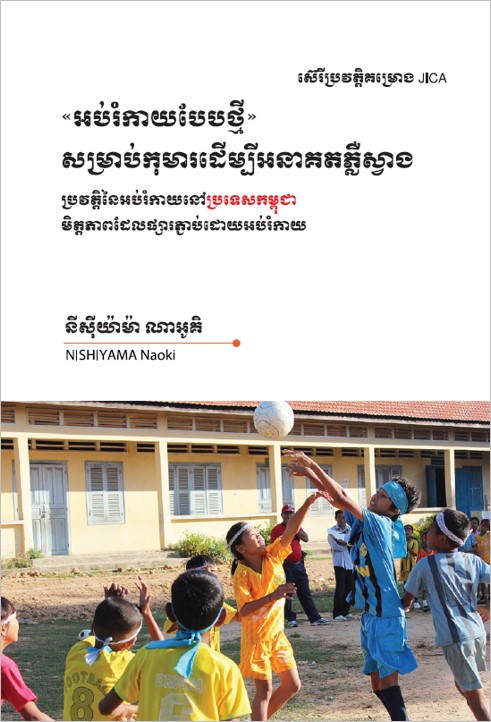‘A New Style of Physical Education’ for a Brighter Future for Children: An Innovative Change in Cambodia by Friends Brought Together by Physical Education (Khmer version)

Cambodia continues efforts to rebuild its school education system, which was once destroyed under the Pol Pot regime. However, as both facilities and teaching staff are insufficient, physical education (PE) is given a low priority. Although two hours per week are given to PE classes, children used to just do the Khmer exercise or some preparation for local or national competitions. The significance of PE was not understood.
Hearts of Gold, a Japanese nonprofit organization, has been supporting holding the Angkor Wat International Half Marathon since 1998 and the Youth and Leader Training through Sport Festival since 2001. Leveraging the JICA Grassroot Technical Cooperation Project, since 2006, Hearts of Gold has also been working on a project to reform PE offered at Cambodian primary schools. The author, Nishiyama Naoki, was dispatched to Cambodia in 2012. What the Ministry of Education, Youth and Sport of Cambodia, JICA and Hearts of Gold jointly aimed for was the dissemination of “a new style of PE” that teaches good behavior, knowledge, skills, cooperativeness and good habits, through rhythm exercise, gymnastics, athletics, soccer, basketball, volleyball and physical fitness tests. However, they literally had to start from scratch — all the way from creating the Khmer word for “vaulting box,” which did not previously exist — in order to make the national curriculum.
This book is a Khmer translation of the original Japanese publication. It describes the efforts that have been made from the desire to deliver a new style of PE to children across Cambodia over a period of nearly two decades: offering training in Japan, formulating national curriculum guidelines and holding workshops. These workshops were held to spread a new style of PE at primary schools and lower- and upper-secondary schools as well as to transform the National Institute of Physical Education and Sport to a college that offers a four-year bachelor program. The voices of stakeholders from Cambodia and Japan who, with a shared belief, pushed forward the spread of a new style of PE, are also presented in this book. Featured stakeholders include Prum Bunyi, who was formerly the director of the Department of Physical Education and Sport for Students, and can be called as the father of PE in Cambodia; local teachers in Cambodia who are so passionate that if equipment such as table-tennis tables are not available, they would make them by themselves; and Japan Overseas Cooperation Volunteers. The book is infused with Nishiyama’s unwavering belief that although PE may be just one subject in school curricula, the classes that take place two hours per week have infinite possibilities for Cambodian children.
This book is available in Japanese and Khmer only.
scroll